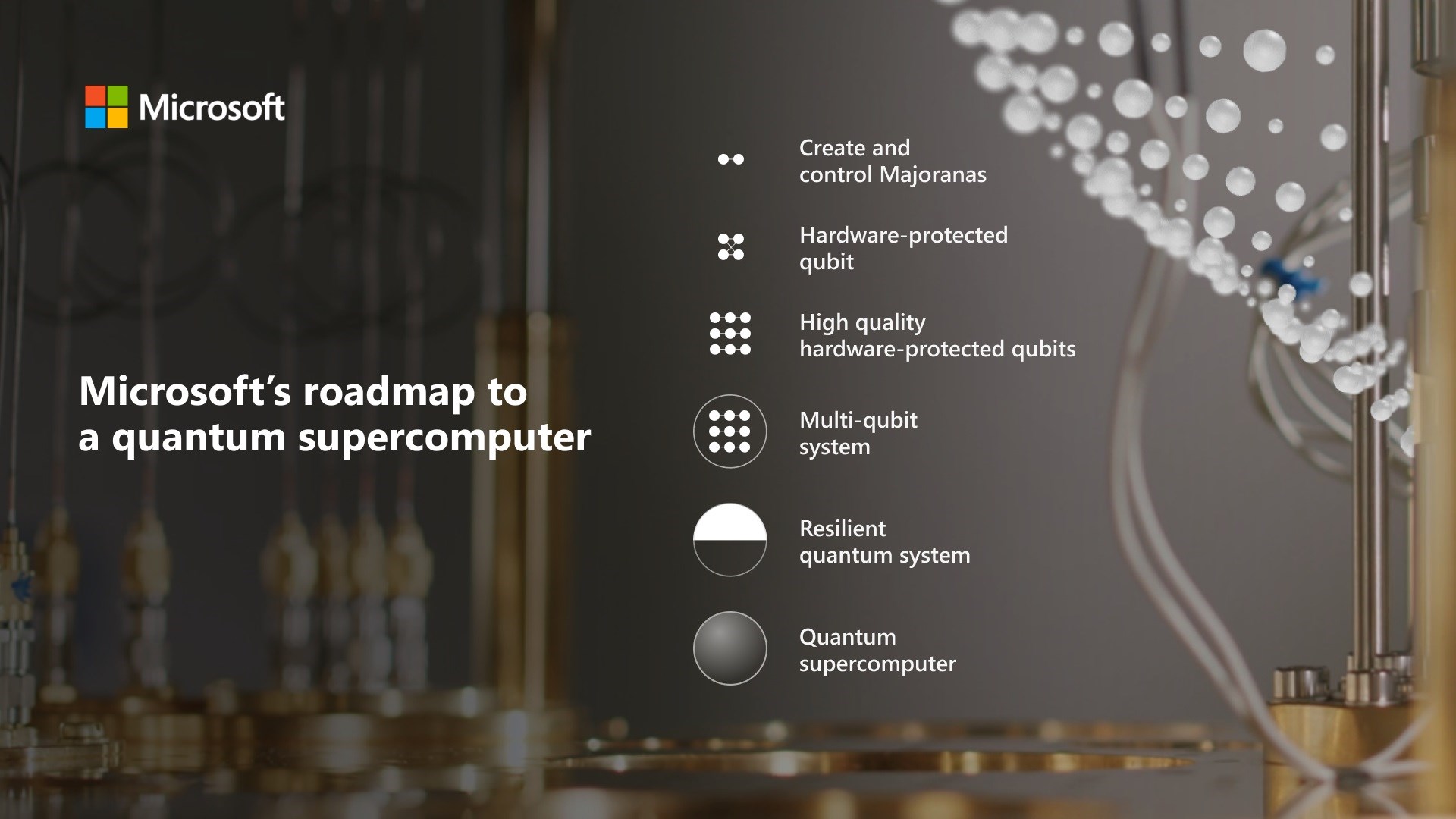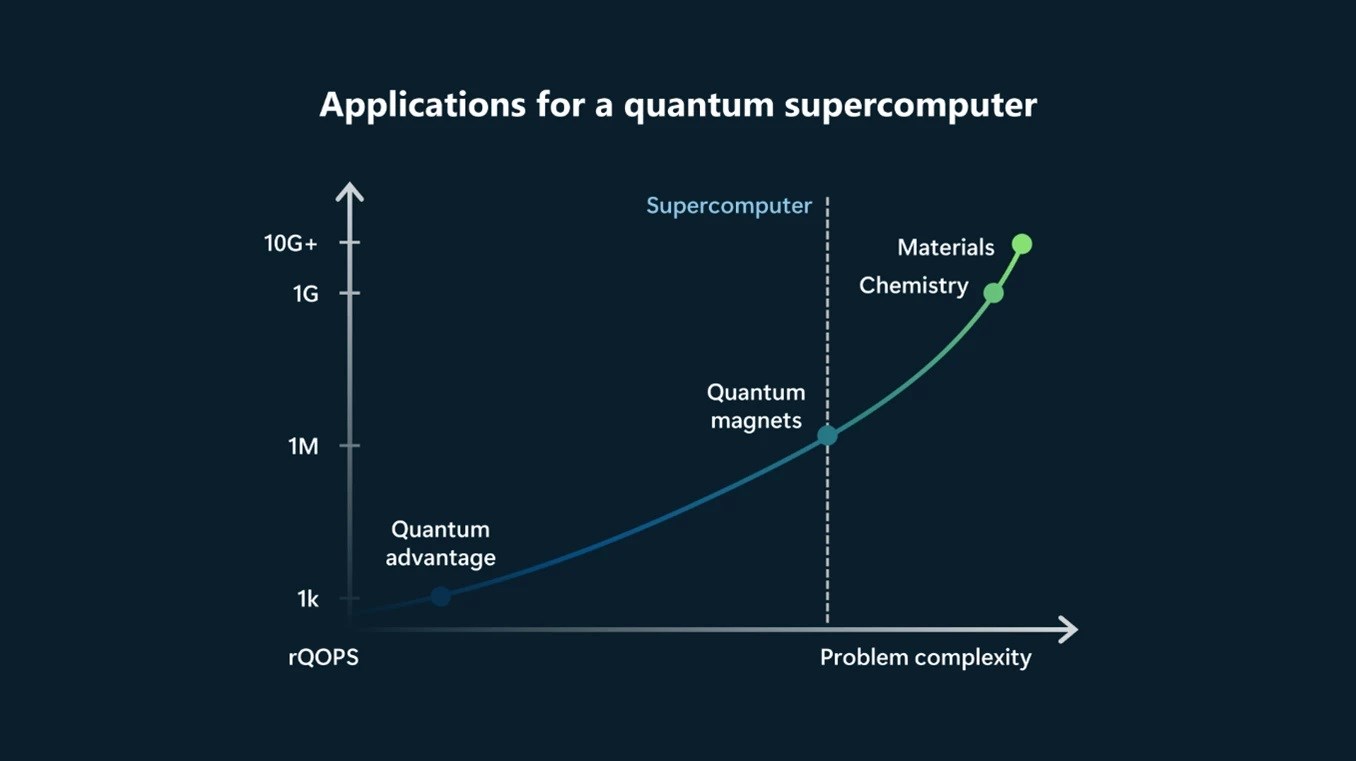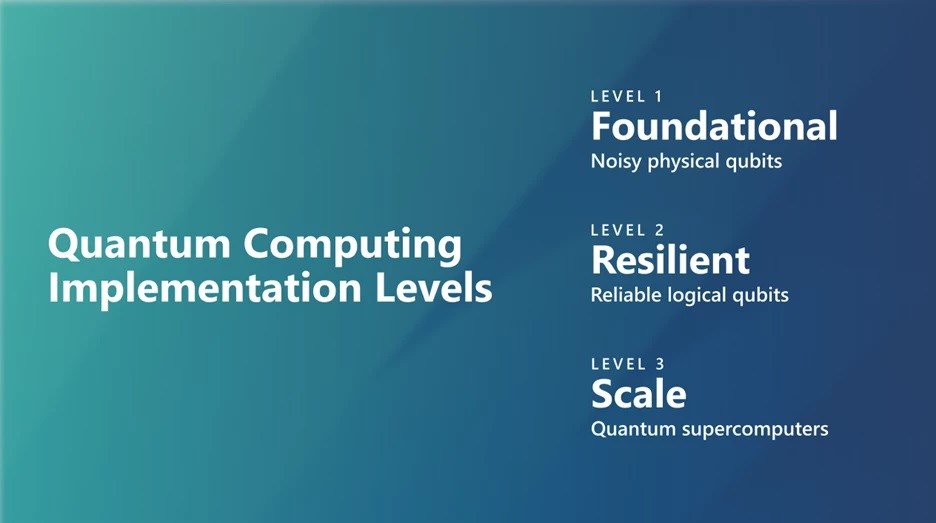 Microsoft recently unveiled its roadmap for building its own quantum supercomputer using topological qubits that the company’s researchers have been working on for several years. There are still many intermediate milestones to reach, but Krysta Svore, Microsoft’s vice president of advanced quantum development, said it will take less than 10 years for the company to build a quantum supercomputer capable of performing a “reliable” million quantum operations per second using these qubits.
Microsoft recently unveiled its roadmap for building its own quantum supercomputer using topological qubits that the company’s researchers have been working on for several years. There are still many intermediate milestones to reach, but Krysta Svore, Microsoft’s vice president of advanced quantum development, said it will take less than 10 years for the company to build a quantum supercomputer capable of performing a “reliable” million quantum operations per second using these qubits.In fact, the company’s goals are quite large and fascinating. This is a new measurement from Microsoft as the entire industry aims to move beyond the noisy mid-range quantum (NISQ) computing age. You can consider the mentioned noise as the error rate in quantum computers.
Quantum computing revolution is coming
“We think of our roadmap and the time to the quantum supercomputer in years rather than decades,” Svore said. However, in 2022, Microsoft announced a major breakthrough when it first highlighted the ability to make Majorana-based qubits. Majorana qubits have the advantage of being very stable (especially compared to traditional techniques), but they are also extremely complex and difficult to create.
 Microsoft made an early investment in this technology, and now, a year after first announcing this milestone, the team has published a new peer-reviewed paper revealing that it has actually reached this first milestone on the road to a quantum supercomputer. To get to this point, Microsoft cited results from far more devices and data than when it first announced this study a year ago.
Microsoft made an early investment in this technology, and now, a year after first announcing this milestone, the team has published a new peer-reviewed paper revealing that it has actually reached this first milestone on the road to a quantum supercomputer. To get to this point, Microsoft cited results from far more devices and data than when it first announced this study a year ago.A new process begins
 Noisy medium-sized quantum machines already exist. These systems, built around physical qubits, are not reliable enough to be practical or advantageous for the nilim or commercial industry. Not only do we need to be able to work with physical qubits, we need to take those physical qubits and put them in error-correcting code and use them as a unit to serve as a logical qubit. Svore argues that getting to this point requires a quantum computer capable of performing one million reliable quantum operations per second and with an error rate of one trillion operations.
Noisy medium-sized quantum machines already exist. These systems, built around physical qubits, are not reliable enough to be practical or advantageous for the nilim or commercial industry. Not only do we need to be able to work with physical qubits, we need to take those physical qubits and put them in error-correcting code and use them as a unit to serve as a logical qubit. Svore argues that getting to this point requires a quantum computer capable of performing one million reliable quantum operations per second and with an error rate of one trillion operations.Now the next step is to build hardware-protected qubits, and Microsoft said great strides have been made in building them. These qubits will be small (less than 10 microns on an edge) and fast enough to perform a qubit operation in less than a microsecond. Microsoft’s research team plans to work on working these qubits through a process called mesh, a concept that has been debated (mostly as a theory) since at least the early 2000s. After that, a smaller multiqubit system will be built and a full quantum system will be demonstrated.
A new era of scientific discovery with Azure Quantum Elements
In addition to sharing its roadmap, Microsoft announced Azure Quantum Elements, its platform to accelerate scientific discovery by combining high-performance computing, artificial intelligence and quantum. In addition, the firm announced Copilot for Azure Quantum, a specially trained artificial intelligence model that can help scientists (and students) create quantum-related calculations and simulations.
Microsoft CEO Satya Nadella perhaps summed up all these paragraphs with the following explanations: “Today, with Azure Quantum Elements, we are ushering in a new era of scientific discovery by bringing together artificial intelligence and quantum. Our goal is to squeeze the next 250 years of chemistry and materials science progress into the next 25 years.” AI won’t just buy cars or movie tickets for us; will create a doping effect in scientific research. By combining this with the quantum world, Microsoft seems to have gained a significant advantage over its competitors.